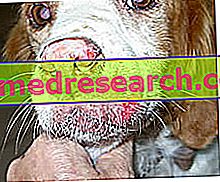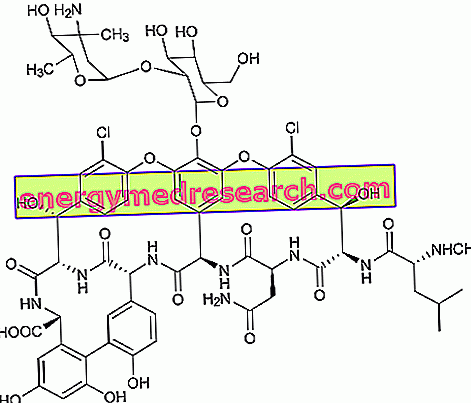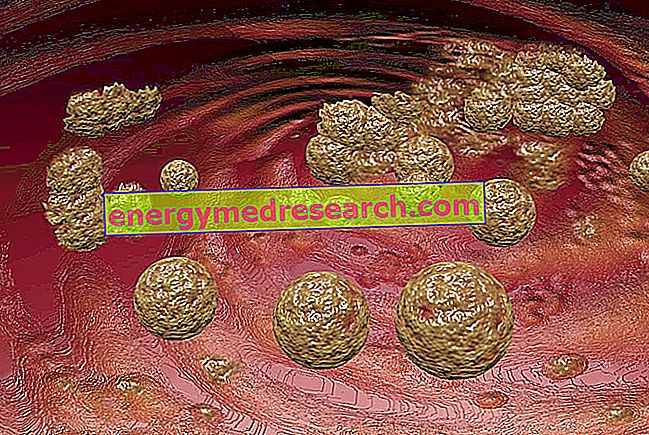See also: lesishmaniasis in humans, medications to treat it
Leishmaniasis is a parasitic disease that mainly affects the dog, rodents and wild animals such as the fox, as well as, although rarely, humans (therefore it is a zoonosis).
Causes

To the Genus Leishmania belong many species that - depending on the geographical distribution and the kind of lesions caused - are enclosed in three different groups:
- LEISHMANIA DONOVANI group, mainly causes forms of visceral leishmaniasis; present in Asia, the Mediterranean, South America and Africa. To this group belongs the species Leishmania Infantum responsible for leishmaniasis in dogs in Italy;
- Group LEISHMANIA TROPICA, causes skin lesions; to this group belong species not present in Italy, but widespread in North and South America, Asia and Africa;
- Group LEISHMANIA BRAZILIENSIS, responsible for mucocutaneous forms, of which numerous species are endemic in Latin America.
The parasite, to infest the animal, needs a biological vector of transmission, represented by a phlebotomus ( Phlebotomus perfiliewi, Phlebotomus perniciosus, Phlebotomus papatasi ).
Contagion
The phlebotome or pappatacio (from the ancient word pappataccio: which eats silently) is a hematophagous insect (like mosquitoes feeds on blood), very small and silent during the flight. It moves mainly during the night hours of the warm months and as a natural habitat it prefers the rural and coastal environments of the southern regions and islands; in fact, due to the development of the larvae it needs constant temperatures and relatively high humidity.
When the phlebotomist bites an infected animal to eat, ingesting the blood, it takes the amastigote (without flagellum) form of the protozoan of Leishmaniasis. Inside the pappatacio, the parasite takes 4 to 20 days to become infectious: it multiplies in its intestine, assumes the promastigote (with flagellum) and goes back up into the pharynx, to then be expelled from the insect during a subsequent puncture.
The so infected phlebotomist, by pricking a healthy animal, transmits Leishmania which, within the blood circulation of the new host (dog), will be phagocytized (incorporated) by macrophages or other cells of the immune system.
At this point, the protozoan, after having lost the scourge and having thus assumed the amastigote form, multiplies by destroying the host cell which has engulfed it, exiting and invading new ones.
Signs and Symptoms
Leishmania, once entered the dog's bloodstream, reaches different structures of the body, such as lymph nodes, dermis, macrophages and monocytes of the spleen and liver, bone marrow and kidneys.
Precisely because of the involvement of various apparatuses and organs, Leishmaniasis appears to be a disease with multiple aspects, with varied clinical manifestations, including eczematous (inflammatory) skin lesions, especially at the level of the auricle, elbows and hock, the back of the nose and neck, therefore in hairless areas (without hair).
Dogs with Leishmaniasis have an incubation period ranging from a few months to a few years.
The sex, age and breed of the animal do not seem to represent predisposing factors for the onset of leishmaniasis, although it is possible to appreciate a greater spread of the disease among young dogs and, of course, among those living outdoors (because more exposed to the bite of the phlebotomus).
Not all infected dogs show signs of infection; however, if this occurs (ie in the presence of fever, loss of hair and weight, skin inflammation), active infection can be fatal.
Infected dogs play a decisive role in the accidental transmission of the parasite to humans

Clinical forms
See also: Leishmaniasis symptoms
Leishmania-parasitized dogs predominantly develop the visceral form of leishmaniasis, although it is not uncommon to find the cutaneous form as well.
visceral form
The first form of Leishmaniasis, which can occur even years after the animal's infestation, includes symptoms such as:
- early fatigue, drowsiness and weight loss despite the appetite being preserved,
- fever, vomiting and even hemorrhagic diarrhea (with blood),
- cough,
- anemia (due to increased destruction of red blood cells by the spleen) and loss of blood from the nose (epistaxis) due to a decrease in the number of platelets,
- globular aspect of the abdomen (due to increased volume of liver and spleen),
- polyuria (increase in diuresis) and polydipsia (increase in thirst), probably due to renal insufficiency which, in the long run, can cause a loss of proteins through the kidney, with a consequent decrease in those in circulation (hypoproteinemia),
- paresis and / or paralysis of the hind limbs, up to death from cachexia.
skin form
The cutaneous form of Leishmaniasis is characterized by hyperkeratosis (thickening) of the skin with desquamation (dandruff), rarefaction of the hair, abnormal growth of the nails (onicogrifosi) and appearance of ulcers in the peri-ocular area ("dog with glasses"), of mucocutaneous junctions (mouth, anus) and of plantar pads (under the legs).
All these clinical symptoms give the animal affected by Leishmaniasis an "old" appearance.
Leishmaniasis: Diagnosis and Care »



